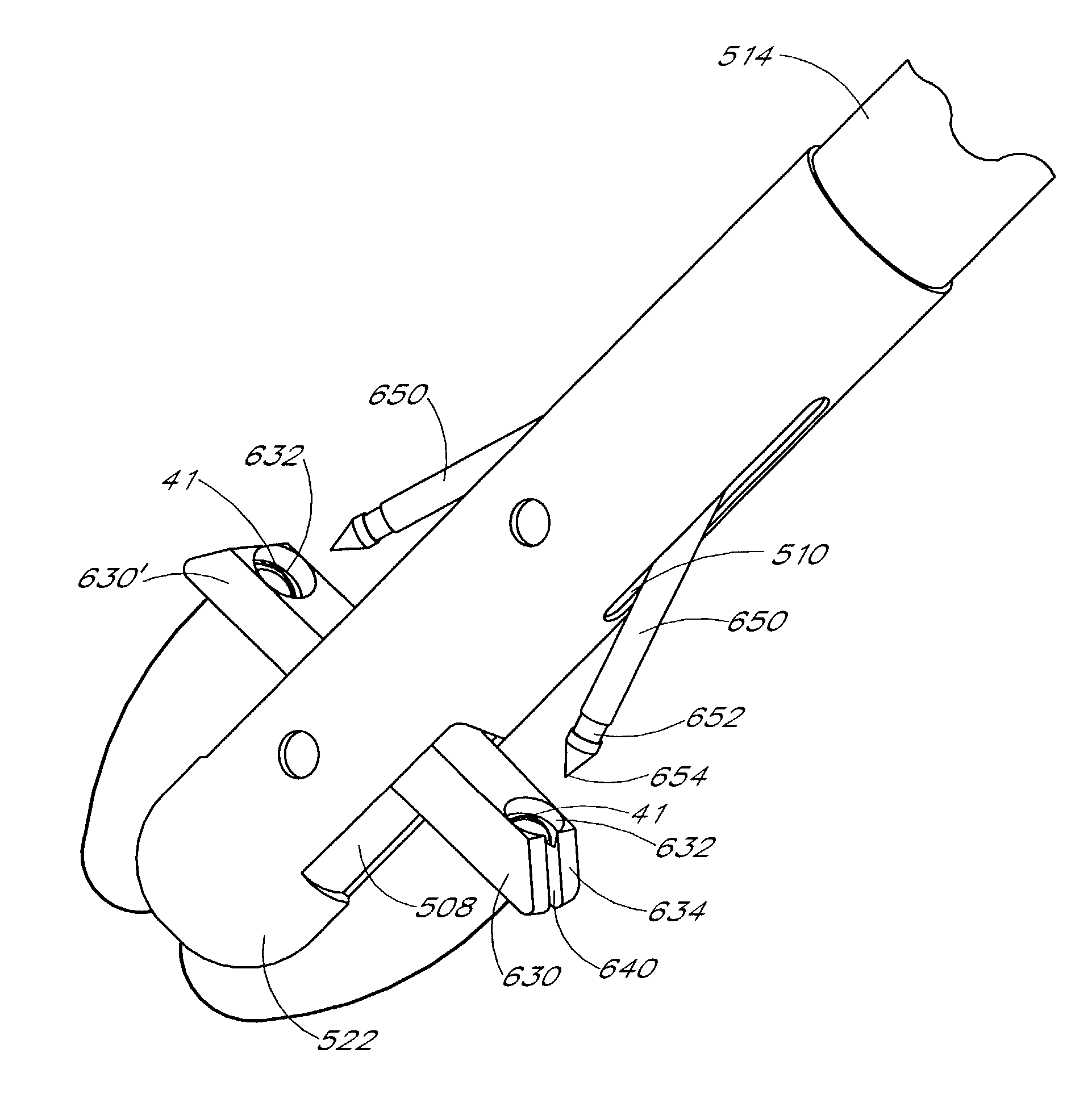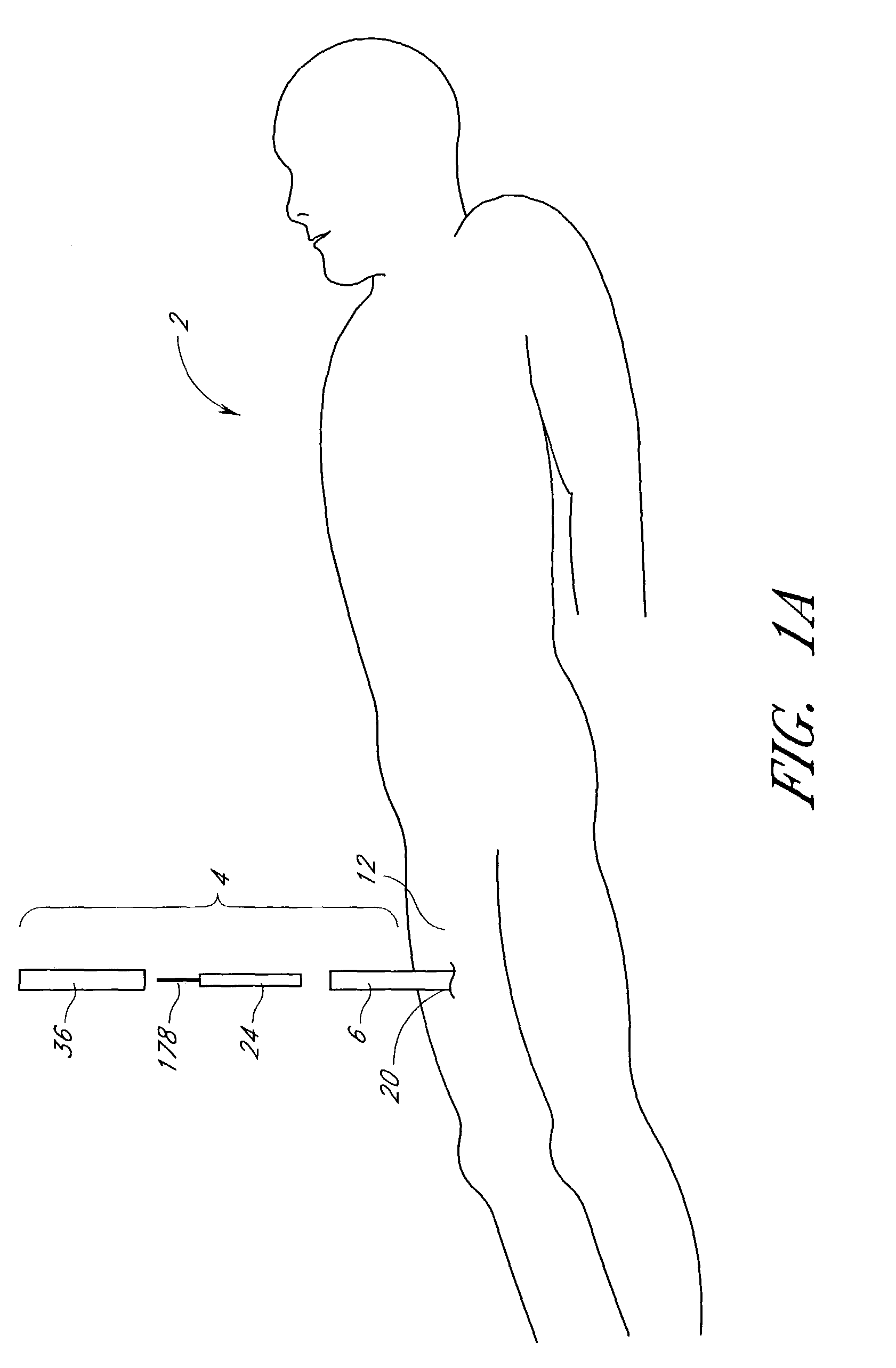Suturing device and method for sealing an opening in a blood vessel for other biological structure
a suturing device and blood vessel technology, applied in the field of medical suturing devices, can solve the problems of thrombosis, thrombosis bursting, patient bleeding to death, etc., and achieve the effect of reducing complications and costs
- Summary
- Abstract
- Description
- Claims
- Application Information
AI Technical Summary
Benefits of technology
Problems solved by technology
Method used
Image
Examples
Embodiment Construction
[0083]The present invention provides a suturing device for suturing biological tissue. The suturing device may be used to seal a blood vessel following an interventional catheterization procedure, such as an angiogram. FIGS. 1A–1B illustrate one embodiment of the present invention in an exemplary use environment. As depicted by FIGS. 1A–1B, the physician makes an initial incision 20 in the upper thigh 12 of a patient 2. The physician then inserts a needle (not shown) into the incision 20. When blood bleeds back from the insertion, the physician knows the needle has pierced the femoral artery 16. The physician then inserts a guidewire (not shown) through the needle and into the artery. The physician may take the needle out and insert a plastic needle (not shown) over the guidewire once the guidewire is in place. The guidewire may then be taken out.
[0084]With this needle in place, the physician can insert a catheter sheath introducer (CSI) 6, also called an introducer sheath. This int...
PUM
 Login to View More
Login to View More Abstract
Description
Claims
Application Information
 Login to View More
Login to View More - R&D
- Intellectual Property
- Life Sciences
- Materials
- Tech Scout
- Unparalleled Data Quality
- Higher Quality Content
- 60% Fewer Hallucinations
Browse by: Latest US Patents, China's latest patents, Technical Efficacy Thesaurus, Application Domain, Technology Topic, Popular Technical Reports.
© 2025 PatSnap. All rights reserved.Legal|Privacy policy|Modern Slavery Act Transparency Statement|Sitemap|About US| Contact US: help@patsnap.com



